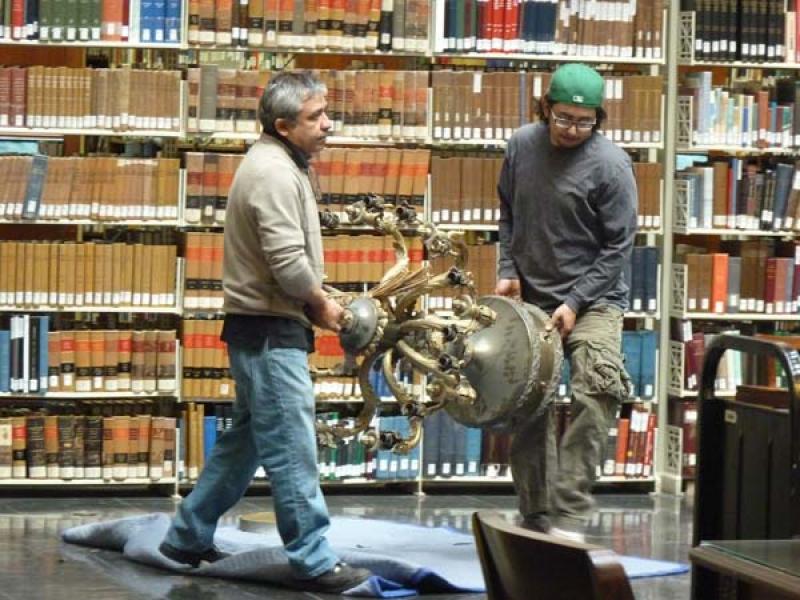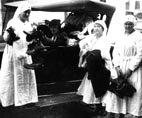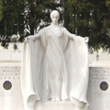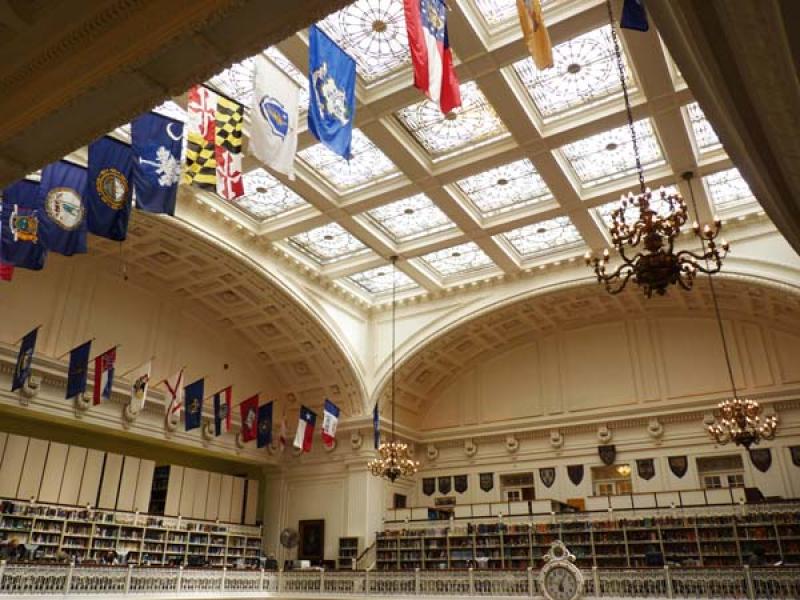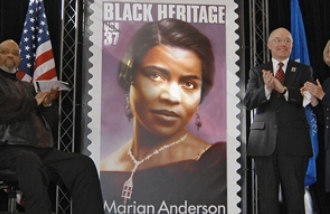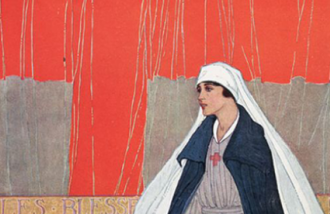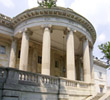The beautiful DAR Library chandeliers are original to 100-year-old Memorial Continental Hall. In order to carry out the lay light restoration, all chandeliers will need to be removed. During this time, the chandeliers will undergo restoration as well. They will be taken to a conservator's lab where they will be cleaned, repaired and restored to their original state, and pieces of the interior workings and wiring will be updated to modern standards.
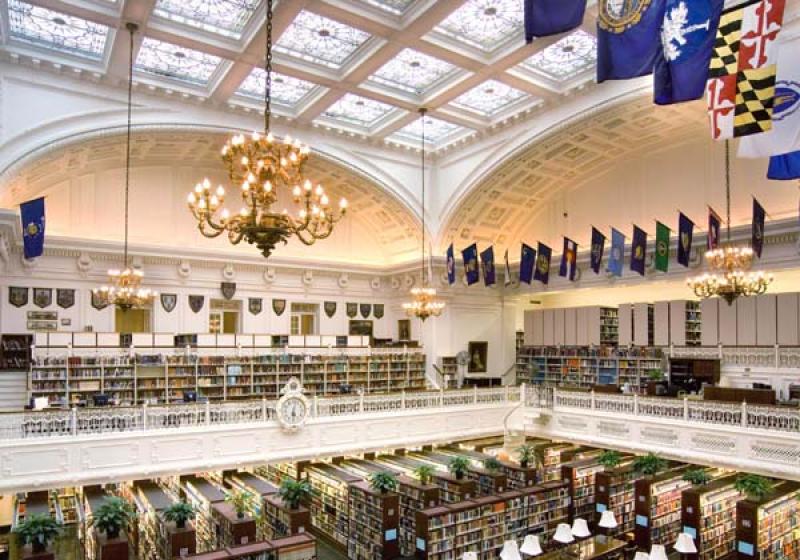
In preparation for the removal of the first lay light panel, one chandelier was lowered to the library floor to be taken for conservation.
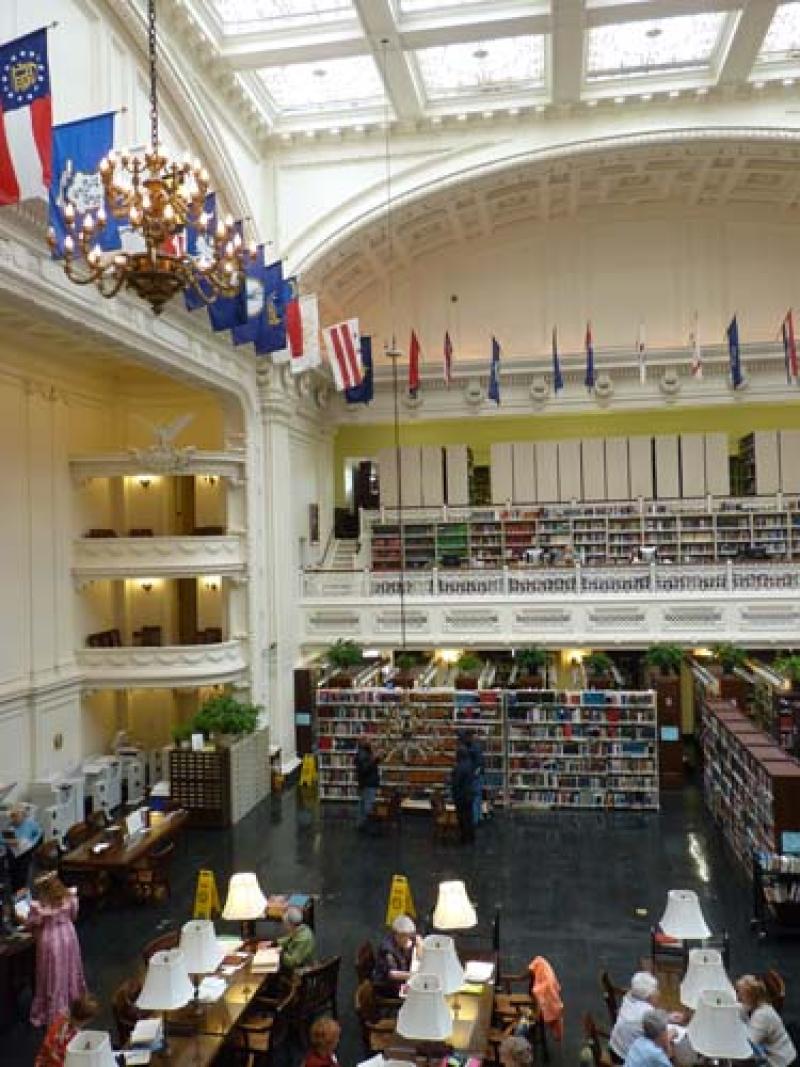
In this photo you can see the canopy that connects the ceiling and the wire separating from the ceiling as the chandelier is beginning to be lowered.
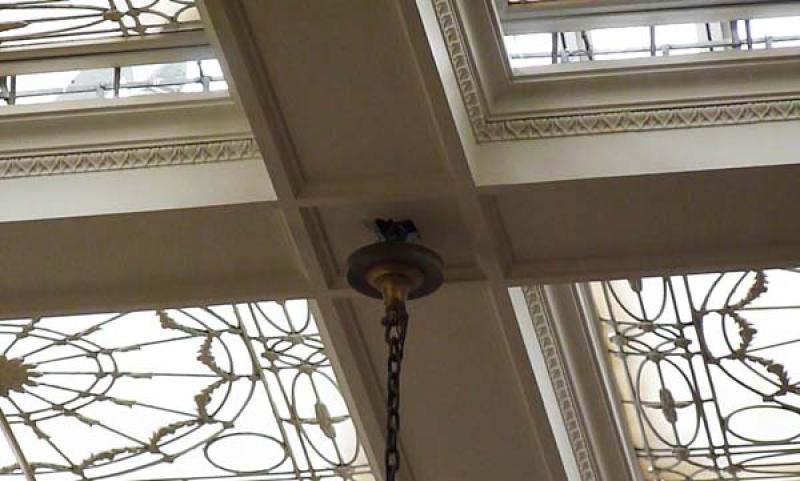
This hoist, which is located in the skylight attic, must be hand cranked to lower the chandelier to the Library floor.

Multiple people, in the attic area above as well as on the ground, are needed to assist with lowering the chandelier to the Library floor.
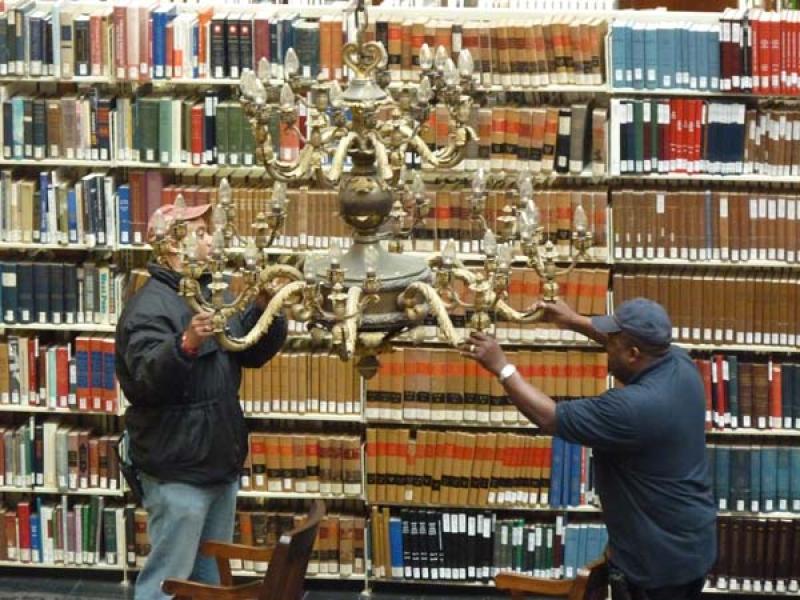
The four DAR Library chandeliers are inspired by Greek and Roman design and made of gilded, stamped cast bronze. The decorative details include acanthus leaves and pinecones, which pick up on many architectural details of the DAR Library and Memorial Continental Hall.
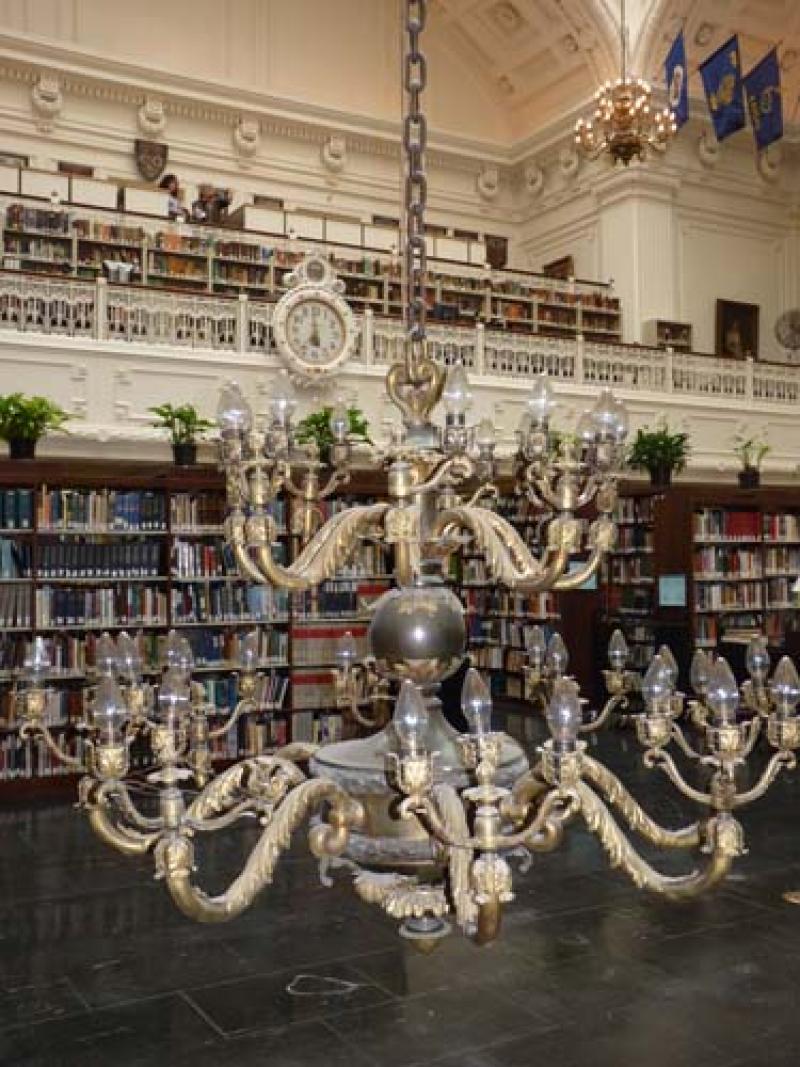
You can see where attempted repairs were made to this arm of the chandelier. Soldering was used to reattach a piece of the arm, but this process did not hold so wire was added to keep the pieces in the correct position.
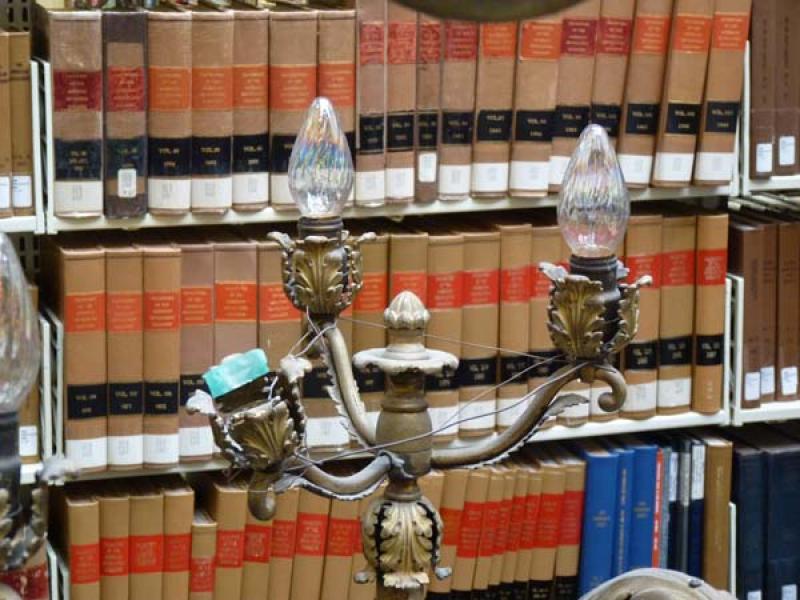
This shackle, which is decorated with a pair of c-scrolls, is located at the top of the chandelier and connects it with the chain.
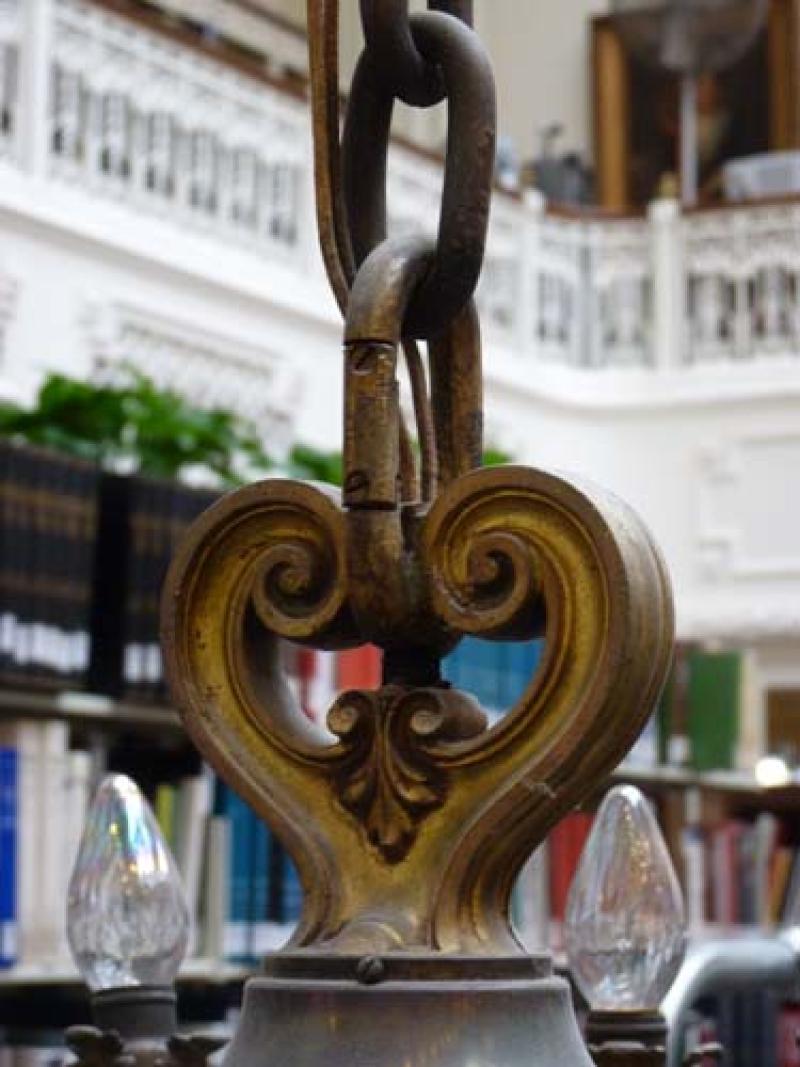
The chandeliers hang approximately 30 feet from the floor of the DAR Library and are only lowered for needed maintenence. This particular chandelier has never been completely removed for restoration before.
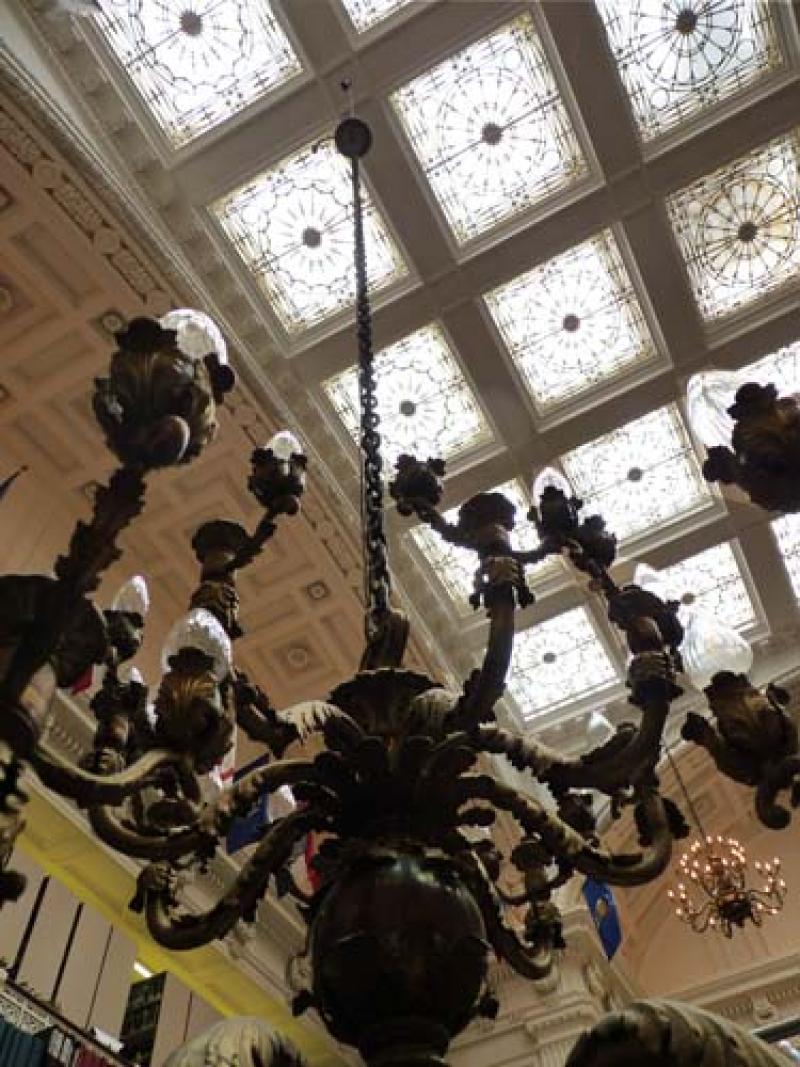
The lightbulb sockets, which are made of porcelain and copper, are original to the chandelier. These will not need much restoration because they are very high quality and are still in good condition.
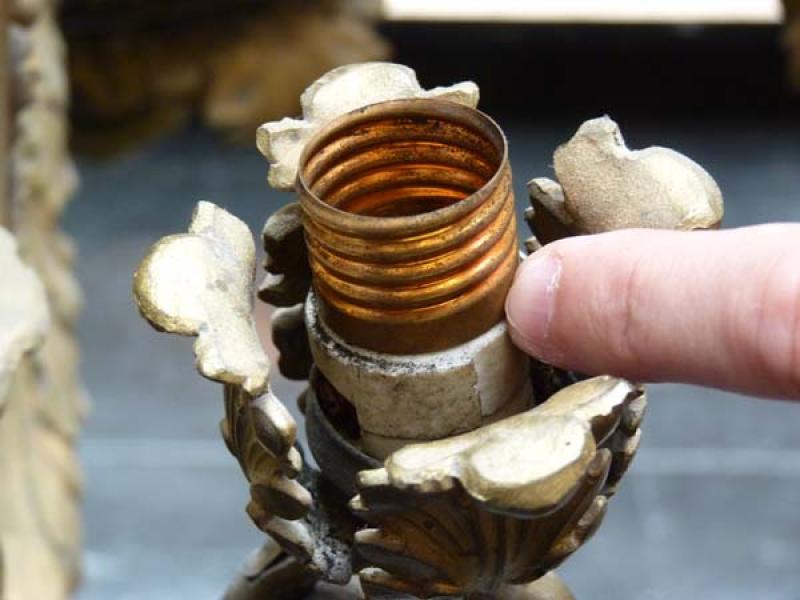
Parts of the chain and the wiring are going to be replaced. New sturdier links need to be added to the chain and this cloth covered wiring will be updated with more modern materials.
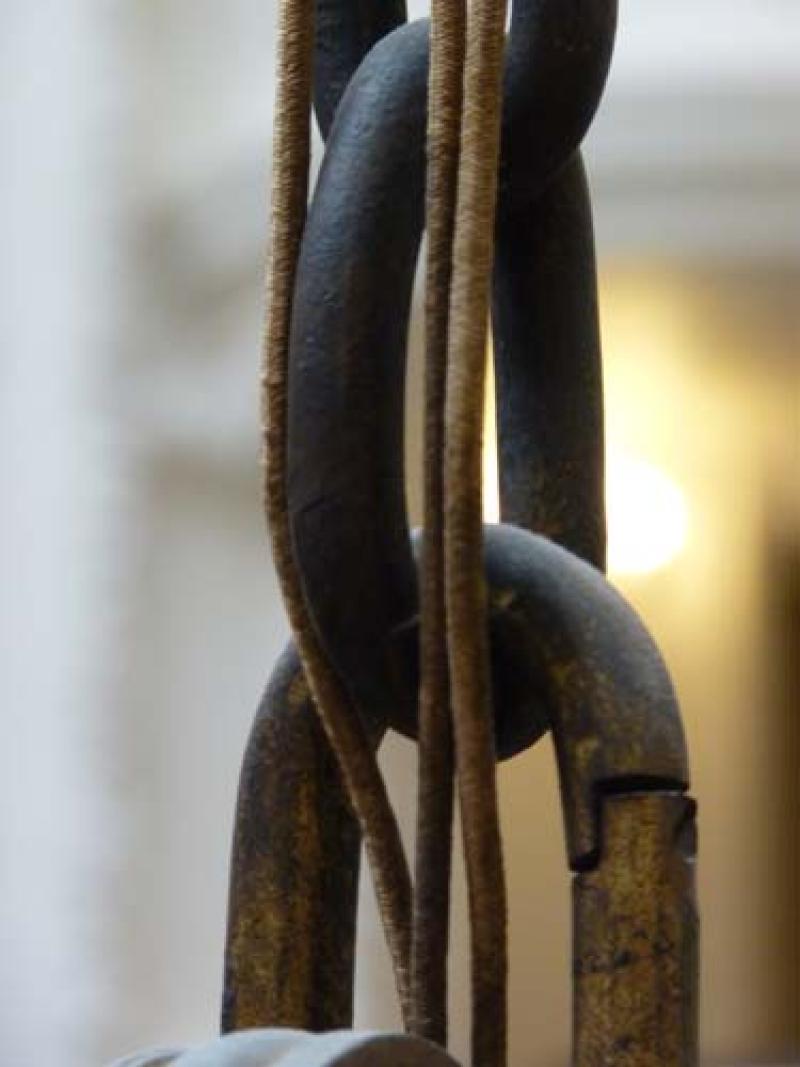
DAR Museum curator Patrick Sheary, closely examines the underside of the chandelier. The chandelier was coated with a lacquer that over time begins to blacken and collect dirt. This is what gives the gold its dark color. The conservator who is restoring the chandeliers will remove the lacquer, which will restore it to the original bright gold color.
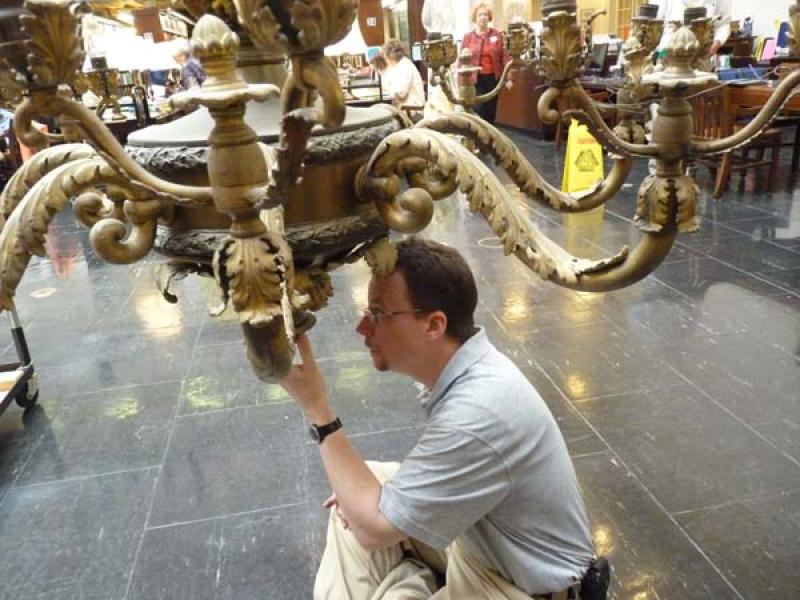
This pinecone finial is very similar to the ones in the stairwells of Memorial Continental Hall.
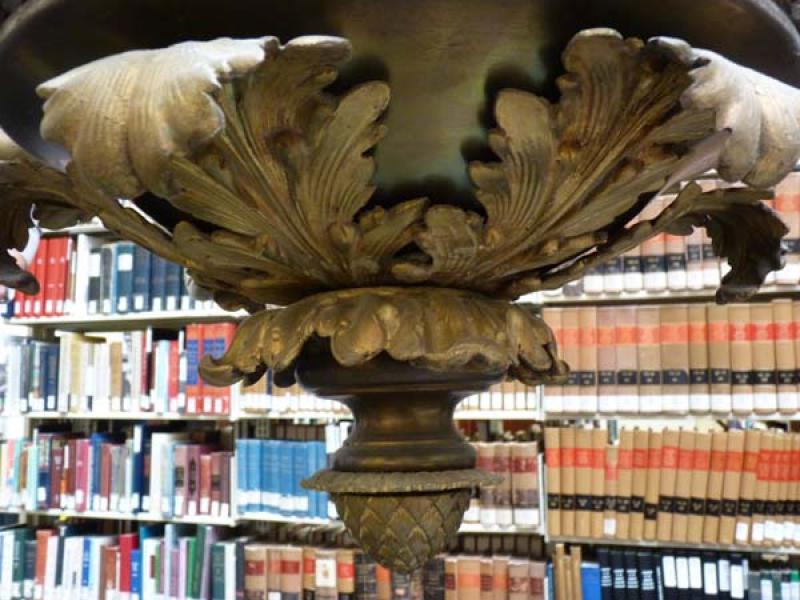
President General Merry Ann Wright was thrilled to see the chandelier up close.

Mrs. Wright enjoyed learning many new things about the DAR Library chandeliers.
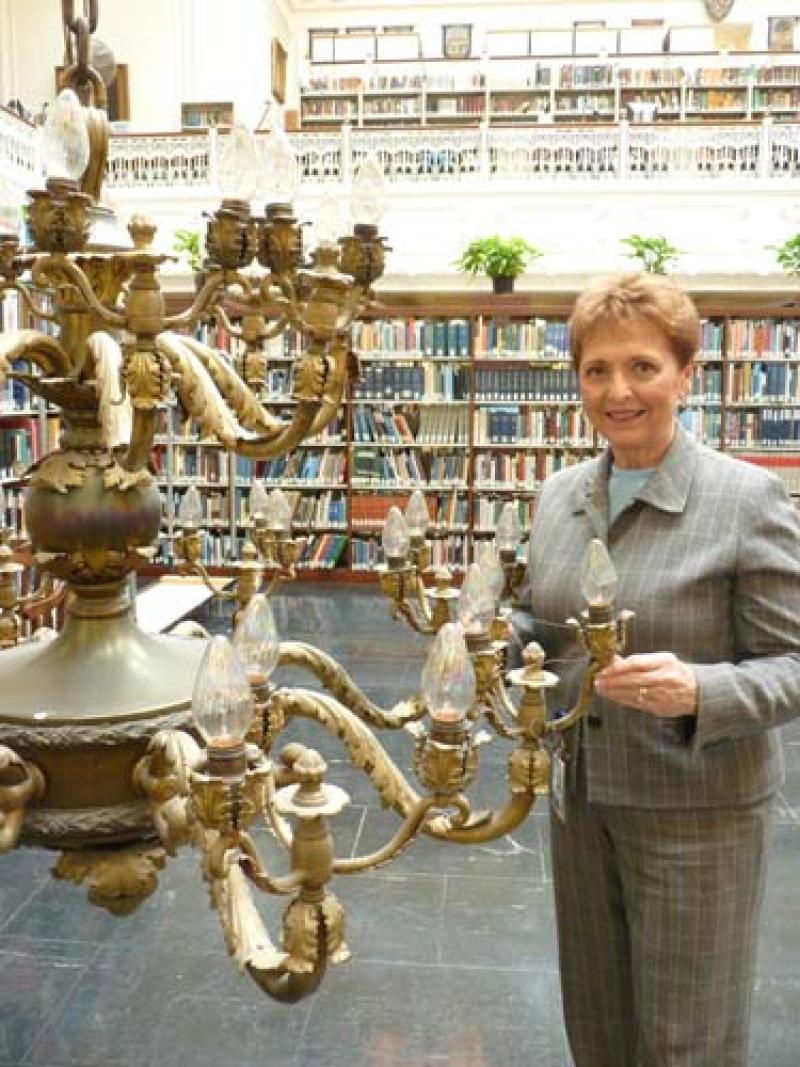
Although much of the chandelier is in very good condition, there are elements of the 100-year-old chandelier that have been lost or damaged. These pieces will be recreated in the conservator's lab.
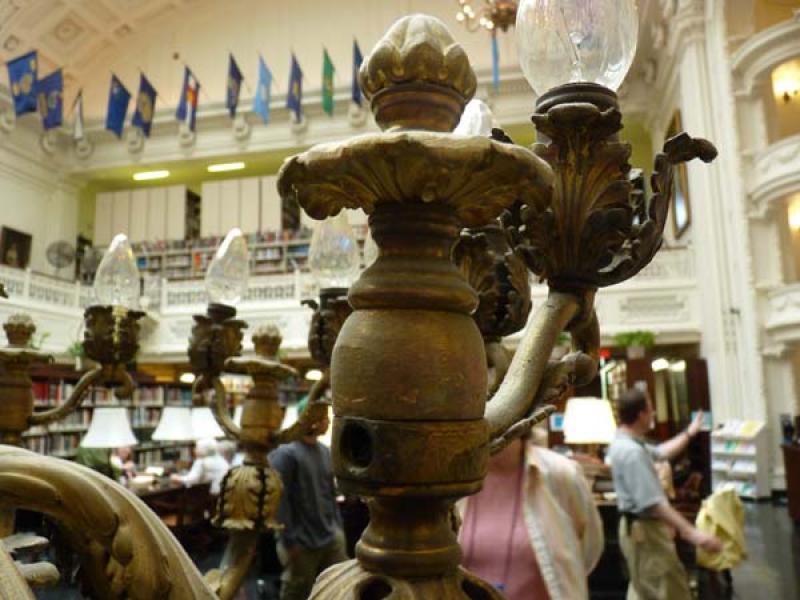
Here are pieces of the original 1910 cloth wires. While these still meet building and safety codes in our current day, they will be updated with modern materials.
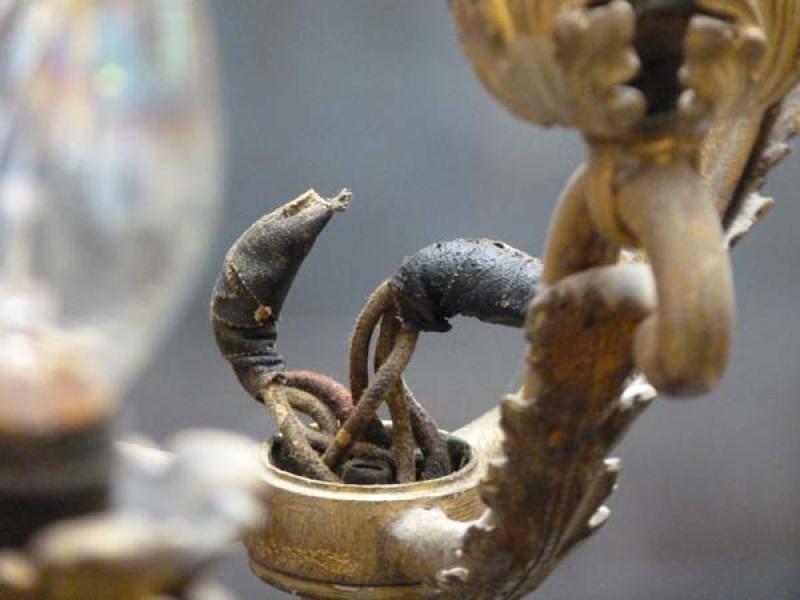
The conservator who will be working to restore the chandeliers is an expert in historic lighting. He has done restoration projects for the State Department, the National Trust for Historic Preservation, the Blair House and the Treasury Building.
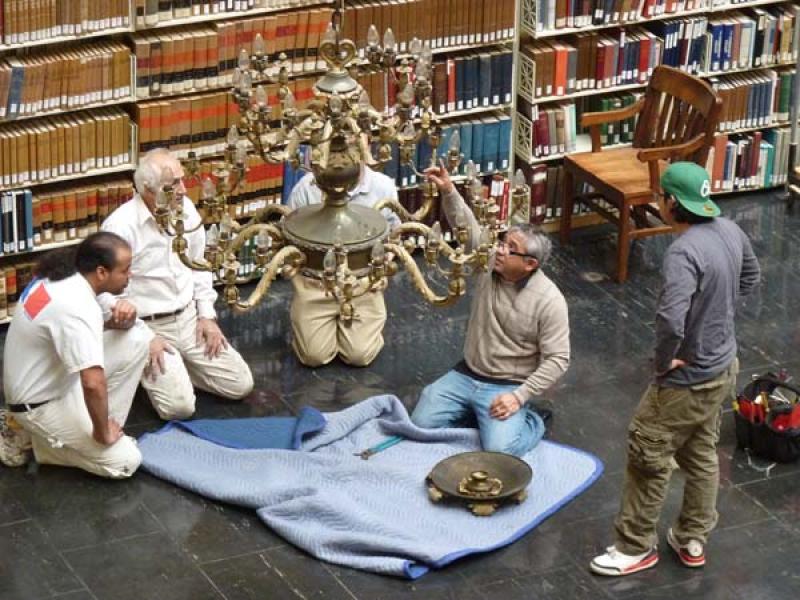
The arms of the chandelier must be unscrewed to disconnect them from the base.
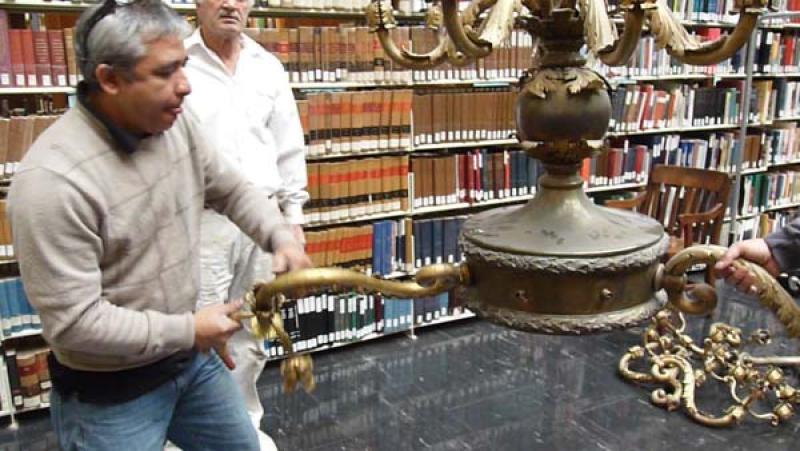
The wires then must be cut to remove the arms from the base. While it is impressive that the chandelier was still funtioning on its orginal wires, they will be restored with modern wiring. Rewiring will make the chandelier function better and it was essential to effectively restore the other parts of the chandelier.
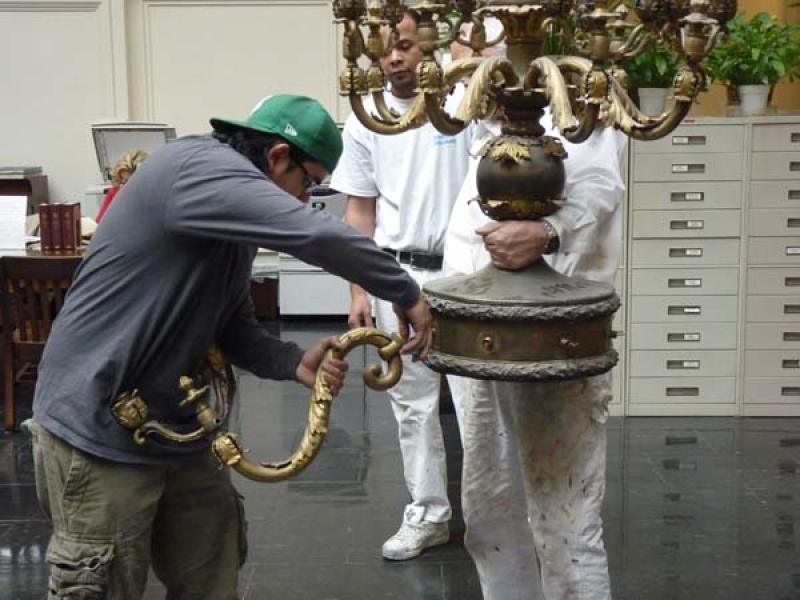
It was necessary to dismantle the chandelier in order to safely transport it to be renovated.
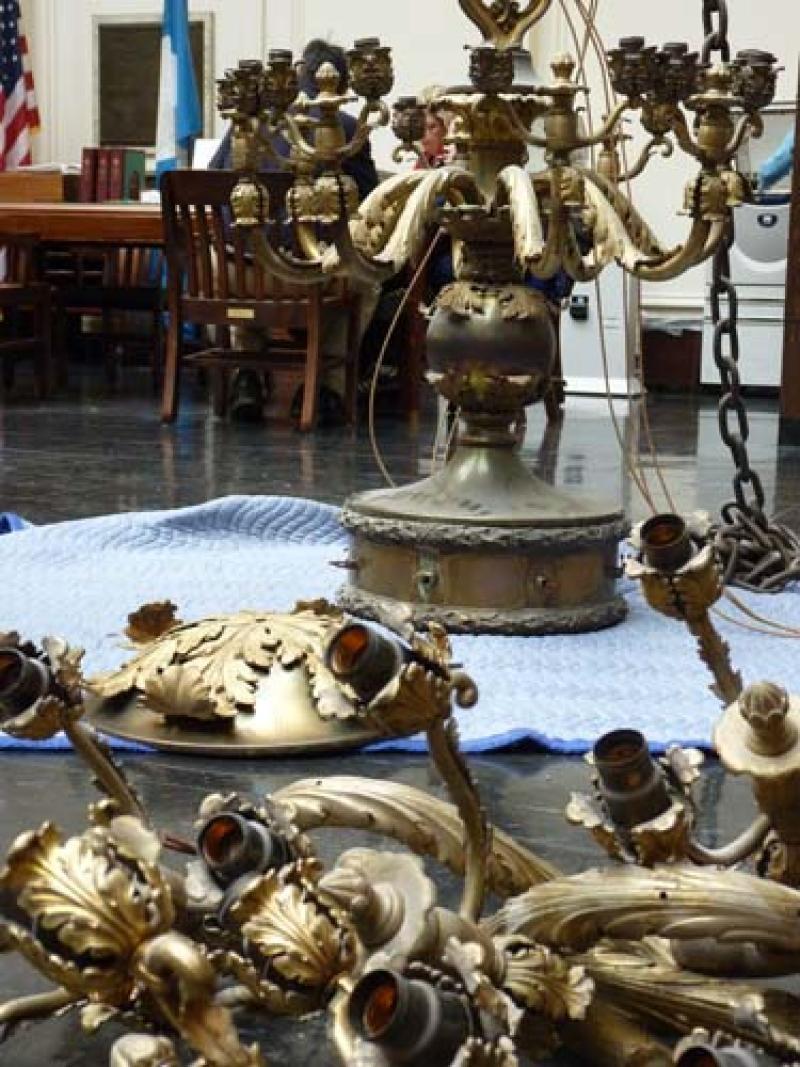
This piece is from the underside of the chandelier. It is thought that the flat piece beneath the leaf is a slightly different color to create a contrast between it and the leaf. This would make the details of the leaf more obvious and easier to see from further away.
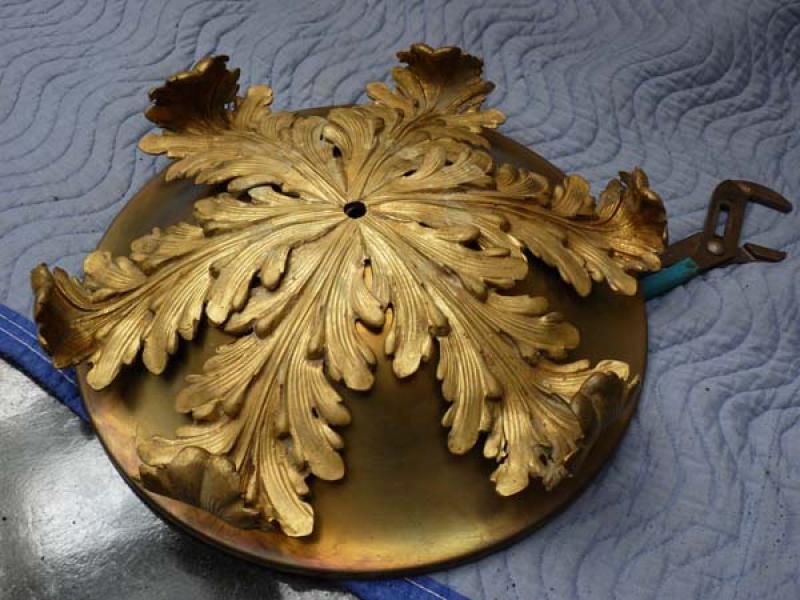
This is the canopy of the chandelier, the piece that touches the ceiling. The wires above it are usually wrapped around the hoist in the skylight attic.

When the chandelier was lowered, a birds nest was found in the canopy, evidence that even though it is protected from the elements by the skylight, birds occassionally got into the attic area above the lay light.

Removing this first chandelier made room to safely lower the first lay light.
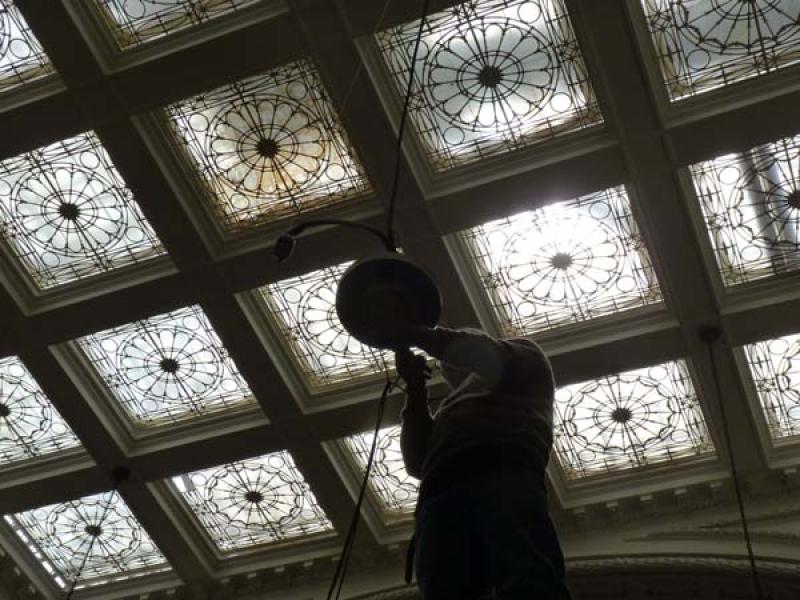
At some point the ceiling was spray painted, resulting in paint overspray on parts of the chandelier.
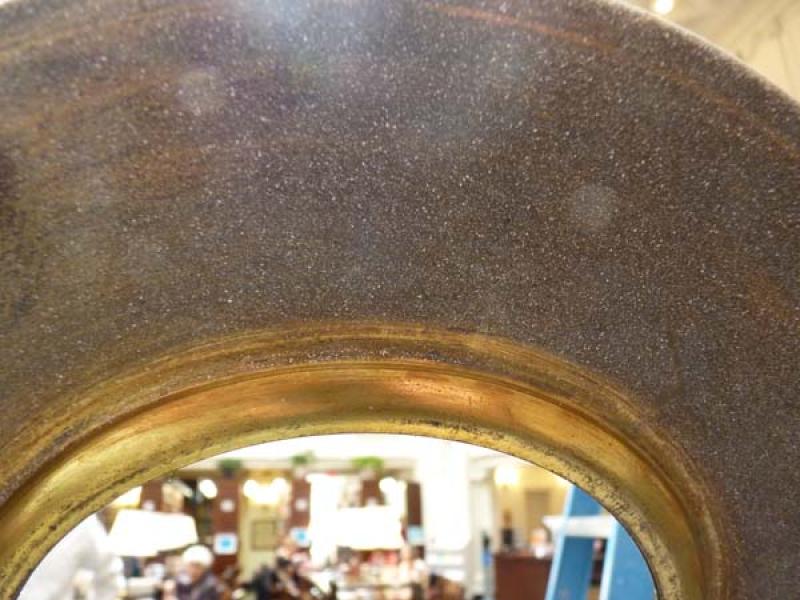
This piece of wiring is not original to the chandelier. It was probably installed years later.
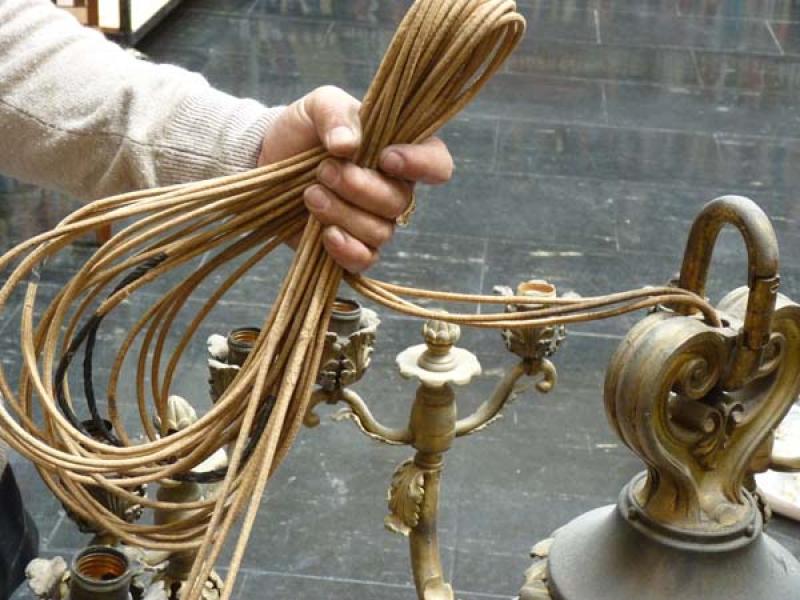
Here the chandelier looks much different than when it was hanging above the DAR Library just a couple hours before.
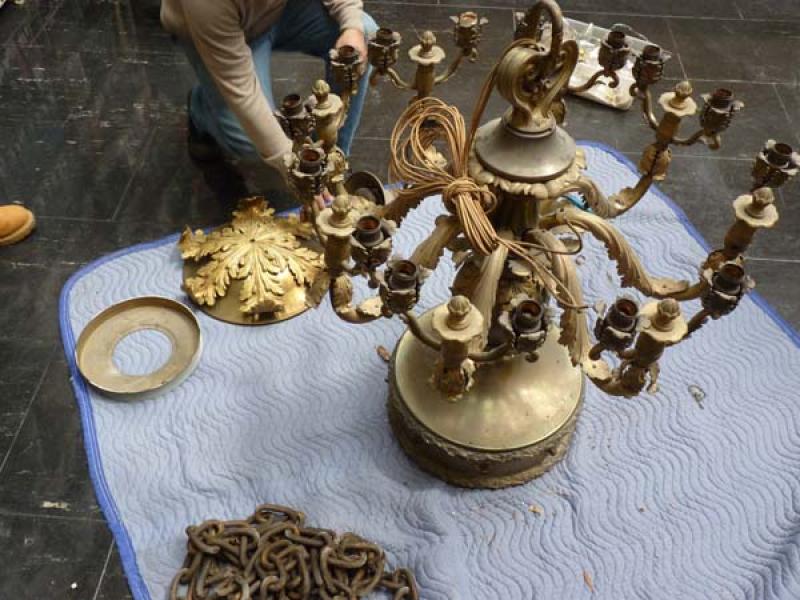
The conservators take the dismantled chandelier to their lab to begin restoration.
